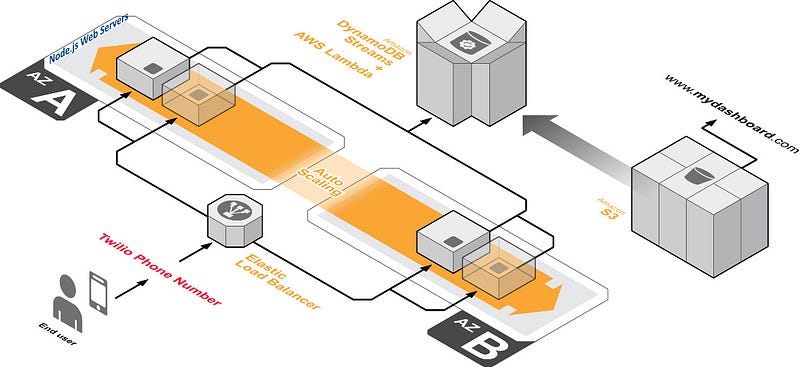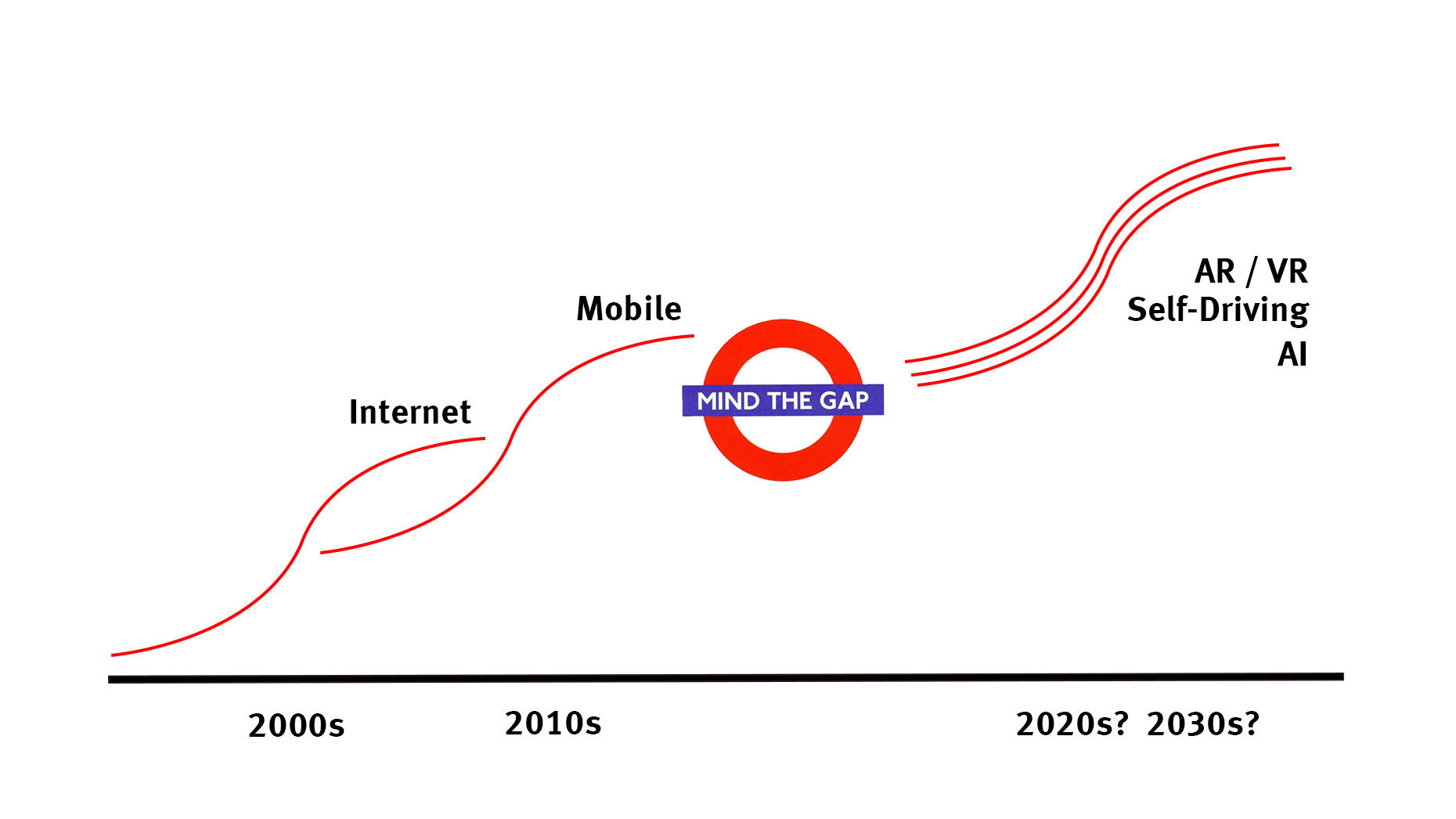Sections
Artificial Intelligence Skepticism
[avatar user=”malm” size=”small” align=”left” link=”file” /]
Two US government reports out this week helped raise the ante even further on the future application of Artificial Intelligence technology developments and underscore the growing sense that it is a technology that has arrived on a global scale. The US focus for now is on regulation, transparency and, interestingly, the removal of bias from underlying datasets:
Three key guiding philosophies were presented across the reports: AI needs to augment humanity instead of replacing it, AI needs to be ethical, and there must be an equal opportunity for everyone to develop these systems.
Barack Obama at least has a clear and cogent point of view on the future trajectory of Artificial Intelligence unlike say Donald Trump. Obama expressed it well in a Wired interview this week. His priority is not the paradigm-shifting advent of AGI or ASI but the more practical looming impact of technological unemployment on US society:
“Most people aren’t spending a lot of time right now worrying about singularity—they are worrying about ‘Well, is my job going to be replaced by a machine?’”
The UK Science and Technology Committee also published a report on the role of Artificial Intelligence in society which underlined another key concern, namely the huge education gap and the huge and growing skills shortage in AI and machine learning technologists and practitioners:
the education systems in both the UK and the US are not built towards creating the skills required for a digital era and artificial intelligence. The industry is already in a skills drought, this can be seen through the vast sums of money which is being spent on AI start-up acqui-hires, and it will only become worse.
Given the skills shortage and an unclear view how we move from genesis and custom-built solutions to products, platforms and utilities, it is right to exhibit at least some caution and skepticism over the near-term direction of travel. As if to underscore this point, the Facebook Messenger proposition which was widely considered to be the standard bearer of “AI for the masses” has largely underwhelmed and appears to have been sent back to the drawing board for surgery to make it more practically useful to ordinary Facebook users. The quality and richness of the underlying datasets used to build genuinely valuable models is proving to be at the core of future advances:
Facebook’s artificial intelligence research team initially estimated it would take tens of thousands of queries before M could book a restaurant without humans. That estimate later ballooned to many millions, said a person with knowledge of the planning.
There are also other serious practical concerns with the integration of AI technology in human activities. One is excellently examined in this thought-provoking Guardian post by Tim Harford which explores how “mode confusion” brought about by involuntary deskilling of “rusty” airline pilots resulted in an infamous plane crash with total loss of all on board. It is imperative that as AI technology spreads in applicability that its developers also work hard to address the paradox of automation:
The paradox of automation, then, has three strands to it. First, automatic systems accommodate incompetence by being easy to operate and by automatically correcting mistakes. Because of this, an inexpert operator can function for a long time before his lack of skill becomes apparent – his incompetence is a hidden weakness that can persist almost indefinitely. Second, even if operators are expert, automatic systems erode their skills by removing the need for practice. Third, automatic systems tend to fail either in unusual situations or in ways that produce unusual situations, requiring a particularly skilful response. A more capable and reliable automatic system makes the situation worse.

Artificial Intelligence
Demis Hassabis’s recent Autumn lecture at the Royal Academy of Engineering in London entitled “Towards General Artificial Intelligence” is now available:
In it Hassabis alludes to an “artificial brain” which is appears to be a reference to a recent advances Hassabis’s Deep Mind have made on differential neural computers (DNC) which can “learn” to use and “reorganise” their memory to answer questions about complex, structured data. This video attempts to explain the concept using the example of inference of family tree relations:
How this fits in with a view that we are living in a simulation is very difficult to square. An idea first introduced by Nick Bostrom seems to have moved from the fringes and appears to be garnering much greater mainstream interest gaining a capitalised name along the way, Simulation Theory. It also makes it difficult to know quite what to make of evidence that intimate human-robot seems more when than if:
Ultimately machine learning reduces to well-understood maths. A key optimisation algorithm used to support machine learning is gradient descent and Adrian Rosebrock wrote a very useful introduction to it in this recent post.
Digital Transformation
Forbes explain “why enterprises should care about serverless computing“ – it’s like Visual Basic (VB) but for services:
“Like VB, serverless computing is event-driven, where tiny code snippets get invoked in response to events such as adding a new row to the database or launching a new server in the cloud. The best thing about serverless computing is that the developers need not rely on ops to deploy their code. They will be able to quickly run and test the code in the cloud without going through the traditional workflow.”
The article introduces a previously unencountered ‘aaS’ which seems quite apt as a handle:
“Since the unit of deployment in serverless computing is an autonomous function, the platform is also called as Function as a Service (FaaS).”
The poster child of Serverless FaaS is Amazon’s AWS Lambda proposition. This article explains in a fair degree of technical detail how AWS Lambda can be combined with DynamoDB to build an architecture capable of scaling to consume huge quantities of streaming data in this case to support a mass-scale voting application:

The proposed solution, however, is basically entirely built around AWS elements. This related post provides a good overview of an alternative architecture for consuming and visualising big data at scale using open source components rather than relying on AWS to manage it all for you. It comprises three elements: i) Kafka for distributed messaging, ii) Spark for data processing and iii) Cassandra as a NoSQL data store. The context in this case is a large fleet of autonomous vehicles but the principles are the same for a wide range of use cases such as IoT where large volumes of data are being generated across many different endpoints. For many in that situation, the convenience of using AWS may outweigh any concerns about platform risk:

The Internet of Things
Benedict Evans muses on the prospects for Internet of Things based devices to take over from the current dominant mobile paradigm driven by ubiquitous smartphones. He suggests that for this to happen they need to further reduce “friction” for users with viable and dependable voice-based interfaces.
The story of a man who took 11 hours to make a cup of tea with a WiFi kettle is a parable of our times. Or should that be parody? Clearly the smart home has a way to go before reaching mainstream acceptance. Nobody should end up here trying to make tea:
Now the Hadoop cluster in garage is going nuts due to RT to @internetofshit, saturating network + blocking MQTT integration with Amazon Echo pic.twitter.com/ryd42c5ewj
— Mark Rittman (@markrittman) October 11, 2016
Aviva is offering home insurance customers a LeakBot device to help them monitor water supply issues. Insurance seems to be a promising angle for IoT as the business benefit is clear:
LeakBot monitors a home’s water supply system round-the-clock and will alert customers through their smartphones regarding issues such as dripping taps, hidden leaks on pipes and taps being left running.
Excellent run through the process of reverse engineering a car API using curl courtesy of Terence Edent. In this case he looks at the Renault Zoe interface.
Mobile and Devices
Samsung’s Nokia moment arrived in the shape of a $17billion crater left in the wake of its exploding Android flagship Note 7 disaster. It seems remarkable that their Reliability function hadn’t picked up such fundamental battery issues during productization. It’s too early to assess the full impact of developments but the brand damage is likely to be serious. In Nokia’s case it was “only software”, specifically that in the ill-fated N8 that triggered the start of their decline as a smartphone giant. Will it be a battery that does for Samsung?
The announcement of Google’s Pixel phone will only compound the gloom amongst Android OEMs highlighted in the blog just last week. A recent Register post underlines those concerns by explaining why Pixel “turns Android OEMs into roadkill“.
VR in 5 years time – 4k, 140 degrees of view, 30 pixels per degree. It’ll be increasingly difficult to disambiguate reality from fiction. Yet another thing to think about in the context of Simulation Theory:
VR future in 5 years according to Michael Abrash Chief Scientist of oculus #OC3 pic.twitter.com/ddNmf2aqBF
— Jérôme Derozard (@derozard) October 6, 2016
Long and detailed post on the Apple’s iPhone7 depth effect and how it “opens the door to some interesting computational photography“.
Apple’s inclusion of an FPGA in the iPhone7 was highlighted in the roundup a couple of weeks ago. Forbes in a post this week suggest that it will be used for artificial intelligence applications on the phone itself:
With each new iPhone, Apple is embedding more and more artificial intelligence. The advanced camera capabilities in the iPhone 7, for example, come from computer-vision algorithms running on a new image signal processor, an in-house Apple design. The company is trying to differentiate from rivals like Google, which rely heavily on the cloud — rather than the device — for access to artificial intelligence. Apple’s argument is that it’s more secure and private to do some of the computing on the device instead having to route every piece of data to the cloud
Perhaps there is a link with a recent raft of UK-based hires from Imagination Technologies which apparently include the ex-COO.
Meanwhile over in Shenzen, factories can copy and deliver products before they are out in the West thanks to “open source manufacturing”, or Shanzai as it is termed in China, approaches. Quartz suggest the rest of the world needs to accept that and focus on a strategy that prevents simple copying. One example would be the inclusion of platform software that isn’t part of the manufacturing setup:
Businesses are now forced to come to terms with this new reality. It’s not enough to create a product with a groundbreaking design or features, like a smartphone case that turns into a selfie stick. Companies dealing in the creation of physical goods now must make products that are impossible to copy exactly from the get go, by focusing on a special feature they can protect, or creating a coveted brand name consumers will pay more for.
Software
How to pitch the big picture of Agile in an organisation that doesn’t practice it. It starts with outlining the structure that needs to be in place to deliver an app prototype. Organisations struggling to get this are surely likely to face ever more existential threats from newcomers that do:

This excellent post covering ten modern software over-engineering mistakes from an ex-ThoughtWorks employee is a highly enjoyable read. If you don’t have the time to do so, here’s the key takeaway to cut out and keep:
In my 15 year involvement with coding, I have never seen a single business “converge” on requirements. They only diverge. Its simply the nature of business and its not the business people’s fault.
TL;DR — The House (Business) Always Wins
Tip: If you don’t have time to go through the entire post, then this one point is enough.
Startups
This expletive-full one-fingered salute to the startup world is funny and ruefully familiar. Brace yourself for more of this sort of thing if you click the link:
Fuck you and your stupid interview questions. … I never had to shift a bit in a C array in my life! And I never got a compilation error on a white board, when I need a hash set in Java I just use HashSet- I don’t fucking care about the complexity of this code block because I can afford another EC2 instance! So fuck you.

This post from Sam Lessin at The Information suggests that a lot of the hype around startups is orchestrated by big tech elite organisations to fuel their sky-high valuations by attracting the best engineering talent drawn to the very same things ridiculed in the previous link. The reality is that we are a long way from the vision being pushed by the tech platform giants turning into meaningful everyday products for the mass-market which echoes the observations made at the start of this post:
there are plenty of amazing businesses to be built given the technology that we have today and the platforms that already exist. There is no question that there is more growth to come. But, just like we still don’t have flying cars, I wouldn’t be holding my breath for the full blown AI-AR-VR-self-driving-drone visions of the future we are being sold anytime soon.

Trump
An evening with Donald Trump is unlikely to be a barrel of laughs. He doesn’t seem to have any capacity to indulge in light-hearted fun at his own (as opposed to someone else’s) expense as was amply and embarrassingly obvious at a charity dinner this week where he couldn’t and wouldn’t let it lie:
by the end of his 15-minute speech, the high-society crowd was openly booing as Trump took a downward spiral of cheap shots at Democratic nominee Hillary Clinton.
The Week suggest he has “a garbage heap of a soul” and “craves, all else, the furious applause and rapturous adoration of crowds”. WashPo continued their relentless assault on his candidacy and character in a brutal summing up of the case against him. One thing he could do with absorbing is “the thing all women do you don’t know about“.
This post provides some good background on the immense inchoate anger that is driving his campaign and how it is largely driven by a demographic who live outside of the large US cities where Trump is far behind. Trump’s primary strategy to date seems to be to keep pouring fuel on the fire with one extreme statement after another to maintain his core. There’s just a little over a couple of weeks to go and then the whole miserable experience will be over. If by some miracle he wins, he will be in the interesting position of having no-one else to blame but himself if it all falls apart. Not that he will. He’s more likely to take a leaf out of the post-Brexit demagoguery 101 playbook and expend most of his effort and energy abusing doubters, skeptics and “traitors” who don’t believe in his message.
Brexit
Brexit is already happening in the City – it just doesn’t look like many on the outside might expect it to because it’s happening in thousands of small tiny day-to-day ways across many different businesses:
This process has – slowly but surely – already begun. Managers have become less reluctant to sign off on European jobs, legal entities on the continent that were slated to be shut down are being kept open, discreet enquiries are being made about office space.
There will be no Big Bang, just a gradual shift. How far it goes depends not only on the form Brexit takes but also how soon decisions are reached.
There’s a curious and distinct sense that we are missing a playbook on how to get ourselves out of the EU. All we seem to be successfully doing right now is seriously antagonising the very EU countries we are supposed to negotiate a “deal” with. Matthew Parris vividly captured a gnawing sense of concern that maybe we really don’t know what we’re doing and aren’t in control of the outcome as much as many more confident Brexiteers assume we are. Rather like the British misadventure in Suez 60 years ago that helped shape the post-war national mood for a generation:
We British are on our way to making the biggest screw-up since Suez and, somewhere deep down, the new governing class know it. We are heading for national humiliation, nobody’s in charge, and nobody knows what to do.
Britain has far less room for independent manoeuvre because our industries are tightly integrated into global supply chains. Whether we are in or out of the EU, our major industries will all have to conform to external standards if we wish to successfully trade abroad:
Interesting conversation with a Korean former student of mine, who is now a Prof in Seoul and an expert on the EU-Korea FTA pic.twitter.com/LoUQpjNs3q
— Simon Hix (@simonjhix) October 12, 2016
Adding to the complexity and confusion is the Brexit court case which really looks like it could be lost for the government with potentially momentous ramifications not least this incredible scenario:
It is not impossible that the Supreme Court could refer the case to the European Court of Justice. This is one of the very same powers Gina Miller argues is being destroyed by Article 50. … This would appear to be the constitutional equivalent of breaking the space-time continuum.
The sense of a complete disconnect between lived and broadcast realities is something that is superbly explored by Adam Curtis in his latest film, HyperNormalisation. It’s an epic that covers a huge range of topics from Colonel Gaddafi, Lebanon, Israel, Syria, suicide bombing, Henry Kissinger and John Perry Barlow and the techno-utopians with a clever combination of archive video and a foreboding Burial-style soundtrack. As with Curtis’ previous films such as Bitter Lake which focussed on Afghanistan, the overall message can sometimes get lost in the beguiling footage. His main theme seems to be that the oversimplistic political/ideological models that carried us through the Cold War and beyond have been kept alive through a forced normalisation of the status quo supported by the mainstream media. The twin triumphs of Brexit and Trump are the ultimate endpoint – it’s worth reflecting on how both are being essentially rationalised as “normal” when they really are anything but. He suggests that the dislocation being experienced globally is the external sign of the system falling apart. The majority of the nearly 3 hour long film though is about how we got here.

